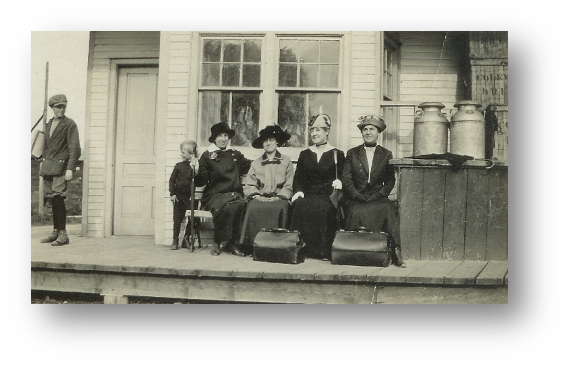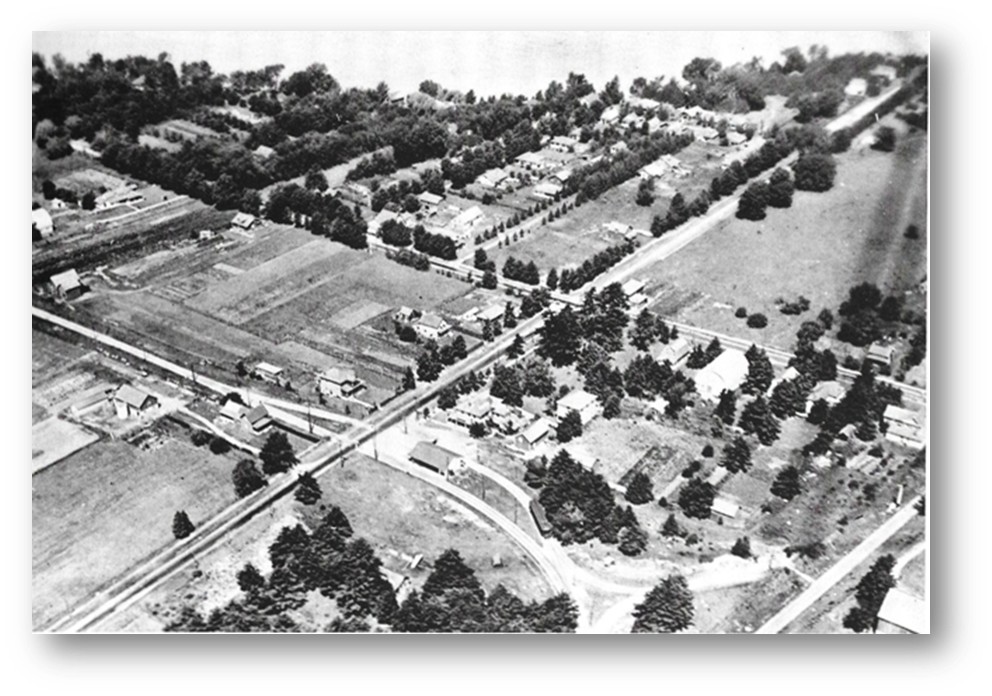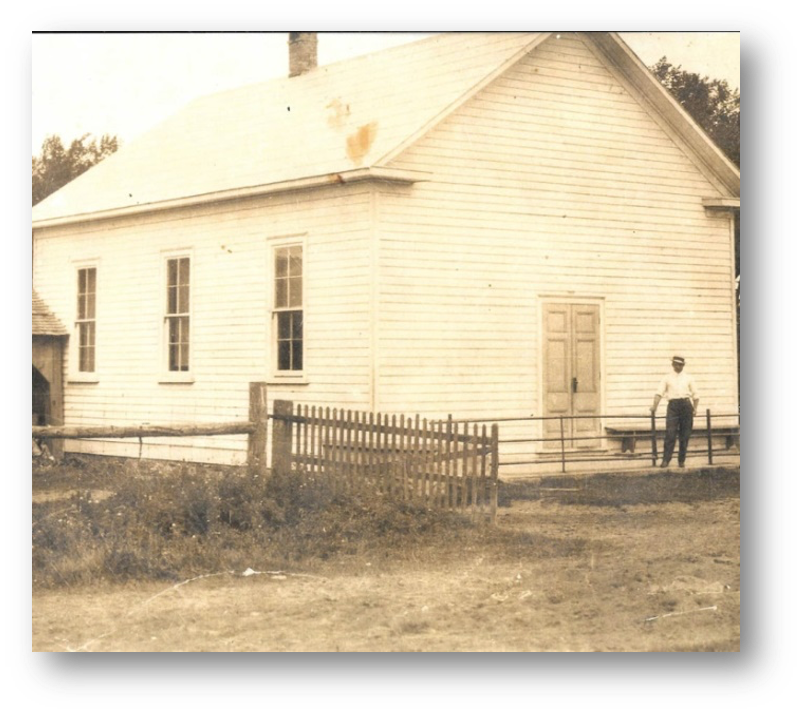Click to Download the PDF
Download the Word Doc
President’s Message
Welcome to the Georgina Historical Society’s January 2020 Newsletter. Our January General Meeting , a “Bring & Brag” will be held on Tuesday, January 21 at the Kin Hall in Sutton. Please note that our winter General Meetings will also be held at the Kin Hall in Sutton. The meeting will start at 7pm, but doors will be open at 6pm for coffee and conversation. Bring your favourite picture or item from the past to share with your fellow history enthusiasts. Looking forward to seeing you there!
Coming up on February 1, is the popular Sno- Fest. Volunteers are needed to help with the making of snow taffy. If you can take a shift helping, please contact Melissa Matt. Your assistance will be appreciated. We are always looking for members to contribute their talents to our undertakings.
If you are interested in contributing your talents to our committees on membership, events, fund raising, newsletter, website, archives, etc, let me or any of the Board members know as your input is always welcome.
~ Tom Glover
STORIES OF EARLY GEORGINA: THE BEEF RING – By Tom Glover
In the last part of the 19th century and the early part of the 20th century lack of refrigeration limited the diet of the rural farm families. Salt pork stored in the cellar was a mainstay of their diets. My grandfather kept his smoked hams buried in the oat bin in the granary. However farmers loved to have a large roast of beef for Sunday supper and hopefully there would be enough leftovers for the next day.
The problem of obtaining a Sunday roast was solved by forming a beef ring.
Throughout the summer months sixteen to twenty farmers would agree to each supply a cattle beast of a certain weight once a week in turn. They would be delivered to the farmer acting as the butcher who would slaughter, cut up and allot the beef according to a strict rotation. The butcher did not have to supply a beef as his pay was his share in the beef ring. No money ever changed hands.
Harold Glover was the butcher for the Ravenshoe beef ring, a position passed down from his father, Henry. The Glover farm located just north of Ravenshoe on the Catering road was a convenient location for the local beef ring. Deliver your beast early Friday morning and pick up your weeks allotment of the processed carcass the next day.
Various cuts were allotted fairly in turn and your weeks share placed in a white cotton bag on a peg for you to pick up. You would come with a fresh sugar or other clean white bag to leave for the next weeks share. Saturday would see the road to the Glover farm well-travelled as the beef ring members came to pick up their weeks share of meat and for a short visit. The farmers pride insured a supply of good quality beef, as you would not want your neighbours to think you provided an inferior product. With the advent of hydro and refrigeration and a more easily accessible supply of fresh meat the beef ring ceased it’s operation.
The beef ring, a real cooperative success, was based on community need and neighbourhood participation. And it solved a problem; the need for fresh beef on Sunday.
Trolley from Toronto – The Metropolitan Railway
– By Robert Holden
In most North American places electrified street railways were called interurbans connecting cities to their suburbs and nearby urban centres. Ontario, radial lines were so called as they “radiated” outwards from Ontario’s cities allowing them to interconnect with each other. The Metropolitan Railway Company, one of the first radial lines, was begun in 1877 along Yonge Street when grocery magnate Robert Jaffray persuaded the government to incorporate his company. Agreements negotiated with local and provincial governments allowed the line to extend north of the city, and on April 16, 1891, exclusive rights were granted for 65 years for operation from Hogg’s Hollow to Lake Simcoe. The ‘standard gauge of 4’8½” was used as it facilitated interchange with other lines. By 1890, the rails reached York Mills (Hogg’s Hollow) and in1896 were extended north to Richmond Hill.
Soon it pushed further along Yonge to Aurora and in August of 1899 had reached Newmarket along its own right of way from Mulock to the base of Main Street where it turned north and ended. Main Street congestion forced realignment slightly to the west behind the retail stores and other commercial establishments. A station and car shed were erected between Park Avenue and Botsford Street. Rails were soon extended to Queen Street and there to the east of Main Street where they again turned to the north over a railway arch and trestle and beyond town boundaries by 1905.
The Company continued to push north to the lake. An off-street right of way was constructed parallel to the east bank of the Holland River to the west of Sharon. From there it swung northeast across Leslie just north of the Mount Albert Sideroad, then headed north, past Queensville. There it ran to the northeast towards Ravenshoe Road to the east of Woodbine then to the north across the present-day site of Walmart in Keswick. The line continued northwest through Keswick just to the east of The Queensway. From Morton, the present day Metro Road uses the old right of way passing east of Roches Point and then turning eastward in a straight line to follow the lake shore into Jackson’s Point (far enough back allowing cottages to be constructed on the shore).
Waiting for the Radial at Keswick Station – 1910. Note the milk cans and wooden boxes awaiting pick-up and/or delivery.
– Georgina Public Archives

By 1906, a foundation was laid for a new power house at Keswick and rails were laid into Jackson’s Point. Construction commenced that year on a station at the northeast corner of High Street, and Dalton Road. The first radial car was welcomed in Jackson’s Point by June 1, 1907.

First Metropolitan Railway radial car arrives into Jackson’s Point station June 1, 1907.
– Georgina Public Archives
By 1909 right of way had extended southward into Sutton on January 1, 1909 opened for travel. Later that year a new station was built at Orchard Beach. The Sutton station remained in use as a waiting room until 1930 and is in use today as a real estate office. In 1910 the Keswick powerhouse at Church Street received an extension to meet ever increasing power requirements. In September of that year Keswick finally got its own station.
In virtually every community through which the railway passed, prosperity increased by as much as 35% silencing objections to its progress. Merged into the Toronto and York Radial Company, it kept its own identity operating as the Metropolitan division of that line. To help sell their service the company established a park at Bond Lake, complete with boats, pavilions, a merry-go-round, and refreshment stands. A steam generating plant, like that at York Mills, was built at Bond Lake. Torontonians and residents of other communities south of Lake Simcoe came north to spend their weekends and holidays at the parks and beaches, staying at one of the many hotels, rooming houses, or cottages. Students from the south shore of Lake Simcoe used the radial to go to high school in Newmarket.
Passengers were not the only source of revenue for the Metropolitan. Almost a quarter of the line’s revenues came from freight; southbound milk and produce from the farms, packages and small shipments of manufactured goods from the city and larger towns; and mail. In northern York County the 1915 route map shows sidings serving a gravel pit at Deer Park Rd, Markle’s at Queensville, Cane’s Woodenware and the Waterworks in Newmarket, and an interchange spur to the Grand Trunk also in Newmarket. There was also a spur that ran down to Lake Simcoe at Boyer’s Road. Other revenues came from surplus power generated by their sub-stations. Power for the Town of Aurora came from the Metropolitan Railway.
Some interesting trivia; in Robert Stamp’s book Riding the Radials (Boston Mills Press 1989) it was noted that the average operating speed of the radial line was 32 km/h (20 mph). As a comparison, in “Light Rail Transit Facts”, Metrolinx, May 31, 2015 the average speed of the subway Line 2 Bloor–Danforth is also 32 km/h (20 mph). Wouldn’t it be nice to have the Metropolitan radial line for our many commuters today!

At Sutton Station 1920
-Georgina Public Archives

Aerial view of Jackson’s Point in 1919 shows the Metropolitan Railway right of way as it enters the photograph left centre and splits left of Dalton Road with the station lodged between the tracks in the lower centre. Just up from the station is the Trolleyrest Hotel (now the Lake Simcoe Arms). Above that, Lake Drive crosses the picture from above left to the centre right. A radial car may be seen just to the right of the station by small clump of woods. A turning wye may be seen in the lower right of the image near the radial car. To the right of this wye, a small part of the right of way of the Lake Simcoe Junction Railway heads north to cross Lake Drive just out of the picture on the right before heading into Jackson’s Point station. Dalton Road crosses the image from the lower left to the upper right.
– Archives of Ontario
Where in Georgina?

Enid Abram once again correctly identified the last mystery location as the mill and river in Pefferlaw. No-one as yet has identified the image above. See if you can correctly identify this month’s location and what it is.
News and Events
Your Board met on January 6th and set goals for the upcoming year; our number one priority and project is to begin restoration of the caboose in the Pioneer Village; secondly, we need to raise funds to covers the costs of our various projects and activities; finally we need to address our ongoing concerns over the Elmgrove Schoolhouse, St. James, as well as other designated heritage sites and the state of our pioneer cemeteries. Paul Brady along with the Friends of Jackson’s Point are engaged in a project to develop plaqued historic walking trails in the Jackson’ Point area. Your Board agreed to give their initiative our support providing that it would also cover other historic areas in Georgina.
We’ve been a bit tardy getting all of our information together for our reconstructed website. We’re almost there and hope to unveil it very soon to the Board before presenting it to the public.
Upcoming Dates
January 21st, 2020: Bring and Brag meeting, Kin Hall, Sutton 7PM, meet & greet 6:30
February 1st, 2020: Sno-fest, Georgina Pioneer Village 10AM to 3PM. Volunteers needed.
Contact Melissa Matt at the Georgina Pioneer Village at 905-476-4305 ext. 2284 or by e-mail curator@georgina.ca
May 7th & 8th, 2020: Rise to Rebellion, Georgina Pioneer Village 9AM to 2PM Volunteers needed, contact Melissa Matt (see above).
